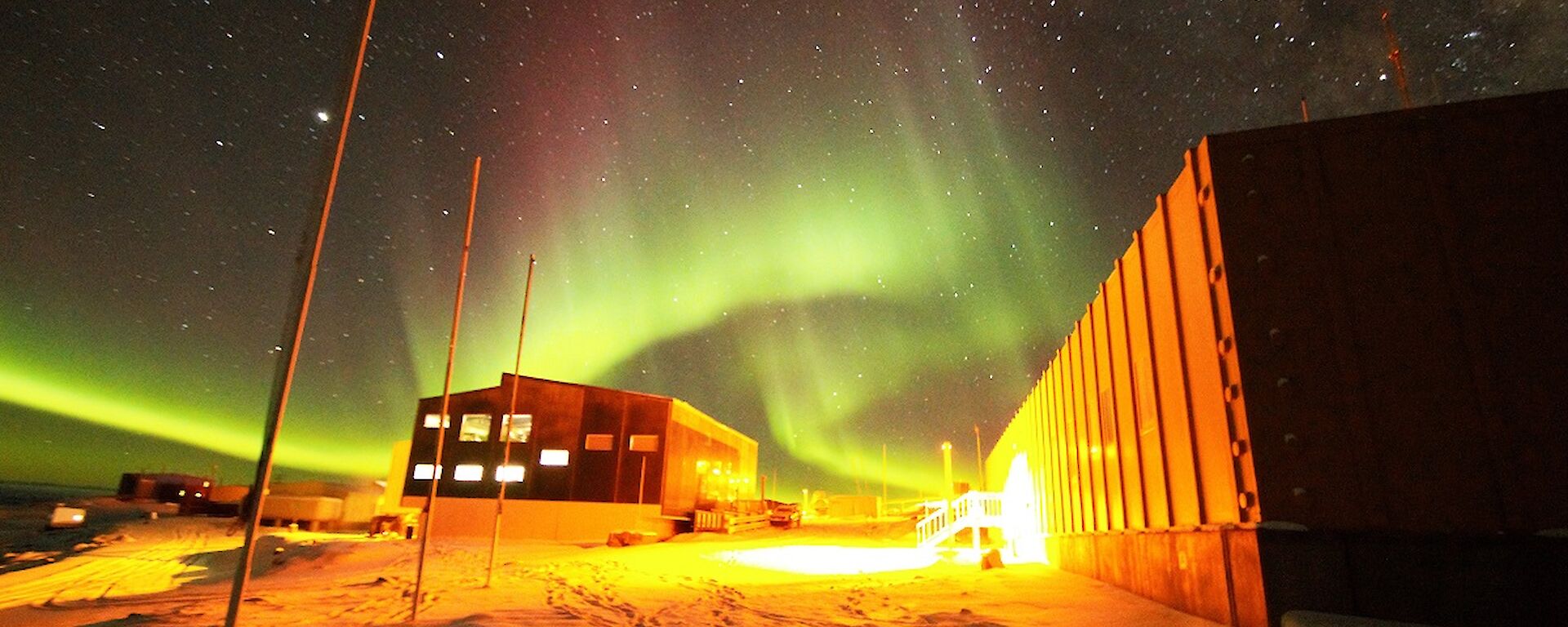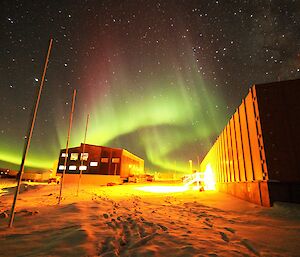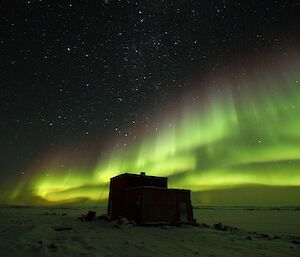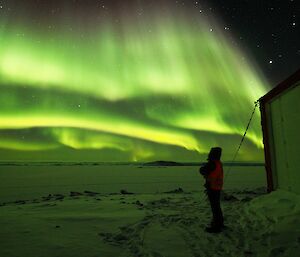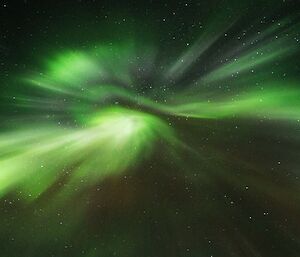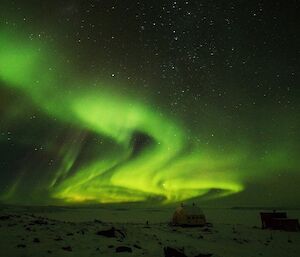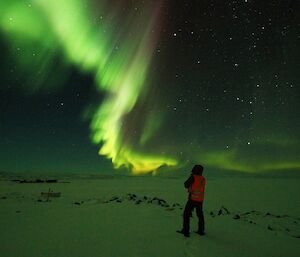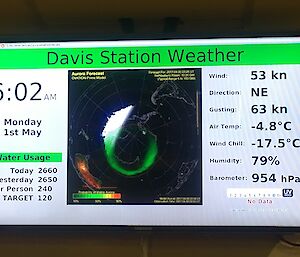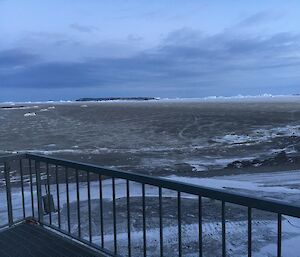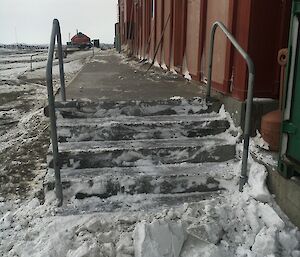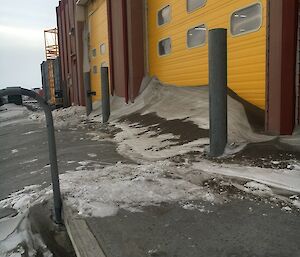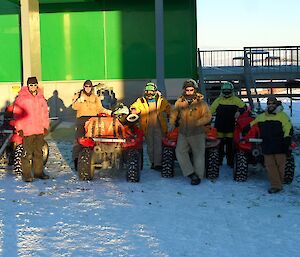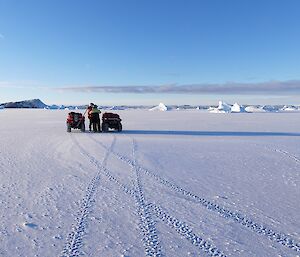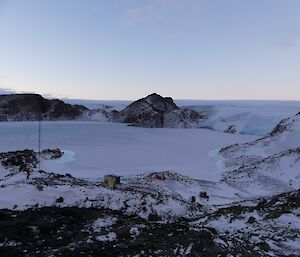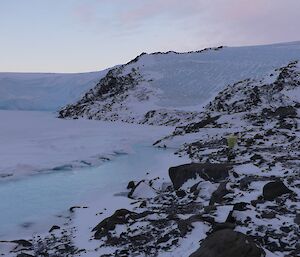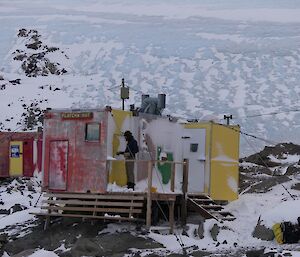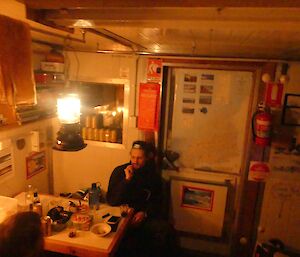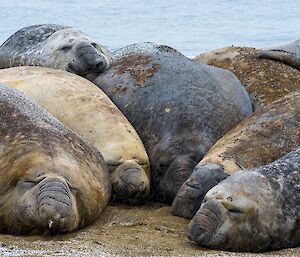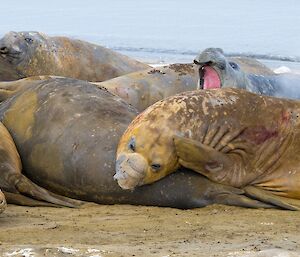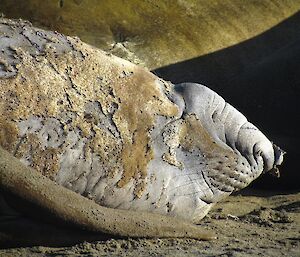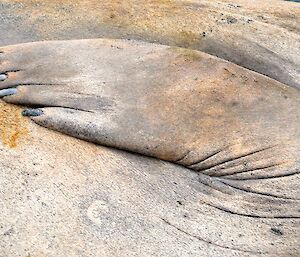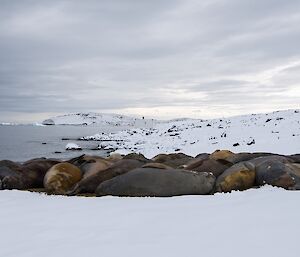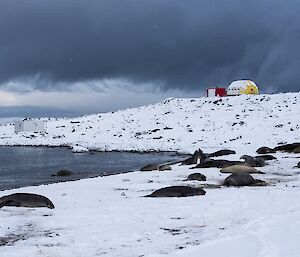Weather, we all get it. Love it or loathe it, it just goes on with or without our approval.
I must admit part of the reason I applied to come here was to see the weather and feel the extremes. Here at Davis conditions are generally fairly benign if not downright pleasant, hence the nickname ‘Riviera of the south'.
During the summer we get plenty of blue–sky days that make me feel like I am at some swanky ski resort rather than at the Antarctic coast. Like anywhere else, the weather each day is a talking point as people relate their various experiences to each other, usually over a pile of hot food.
The downside of Davis’s moderate clime is the amount of snow we don’t get, which can make the place look a little ordinary as the rocks and dust are exposed. So when it snows, or we get a blizzard ('blizz') it generates a bit of excitement — ooh, something different! The weather then alters the station’s appearance and our perspective of it. I must say I am a big fan of snowfall — everything seems to relax somehow and everywhere I look it rings truer to my preconceived concept of Antarctica.
The other stations may mock or sneer at our cosy locale. It probably seems a little ‘soft’ compared to their rugged outlook, but everything is relative and we do have our moments.
For our wintering crew it has been a constant learning curve since the boat left. Each new low temperature is a new record for us and we look back fondly at how much warmer it was when it was ‘only −8°C, or −12°C, or −15°C. It seemed like we would spend about a week at each decreasing temperature then the thermometer would drop again. Bit by bit we wore more and more layers. During summer wearing thermals at all was a last resort, now they are donned without hesitation and the weather update is carefully scrutinised to measure how much is needed to go outside.
We had a spell that saw us hit −29°C (nearly −30°C!) that really shook us to our core. New sensations came thick and fast — fingertips struggling even inside gloves, nostril hairs freezing to give a nice crunchy sensation inside the nose (and then running like a tap when inside and warm again). But as quickly as it came the extreme low departed and we now hover around −15°C to −20°C on most days, with about five to ten knots of wind. So we layer up to get between buildings, then peel off when we get there.
And now we have just had our first blizzard. While the temperature was a relatively mild −7°C we had winds over 60 knots and nearly hit 70. Awesome! It was so exhilarating to crack the cold porch door and hear that freight-train whistle of the wind, step through and then wrestle the door shut against the air pressure. Walking to the workshop was an undignified pleasure as I ended up in a semi-crouch trying to get purchase on the wind-polished ice while I struggled to make any headway into the teeth of the gusts. A mere 80 metre walk had me gasping and breathless by the time I stumbled in the workshop door. And my ears were absolutely on fire with cold! It was like I had no beanie on at all!
Others staggered in and we all excitedly laughed at how amazing the experience was, swapping tall tales of near-falls. Surprisingly, the wind lasted several days and like anything else the novelty wore off. To try and move any goods around is near impossible and every trip anywhere is a battle. Then there is the incessant noise — the constant howl and moan around all the structures. As soon as your head touches the pillow at night there is a shift from sound to vibration as you sense every creak, groan and twang of the building as it flexes and moves.
Apparently this is an everyday occurrence at Mawson, and Casey gets 100 knot winds. So I am thankful that I am at Davis, safe in the knowledge that in a day or two it will be back to a measly five knots and a ‘comfy’ −15°C, probably with sunshine and blue skies!
I have been told we get an average of nine blizzards a year at Davis. I say (as soon as I have a decent night’s sleep and have done a few field trips) bring it on!
Rhys (Carpenter)

